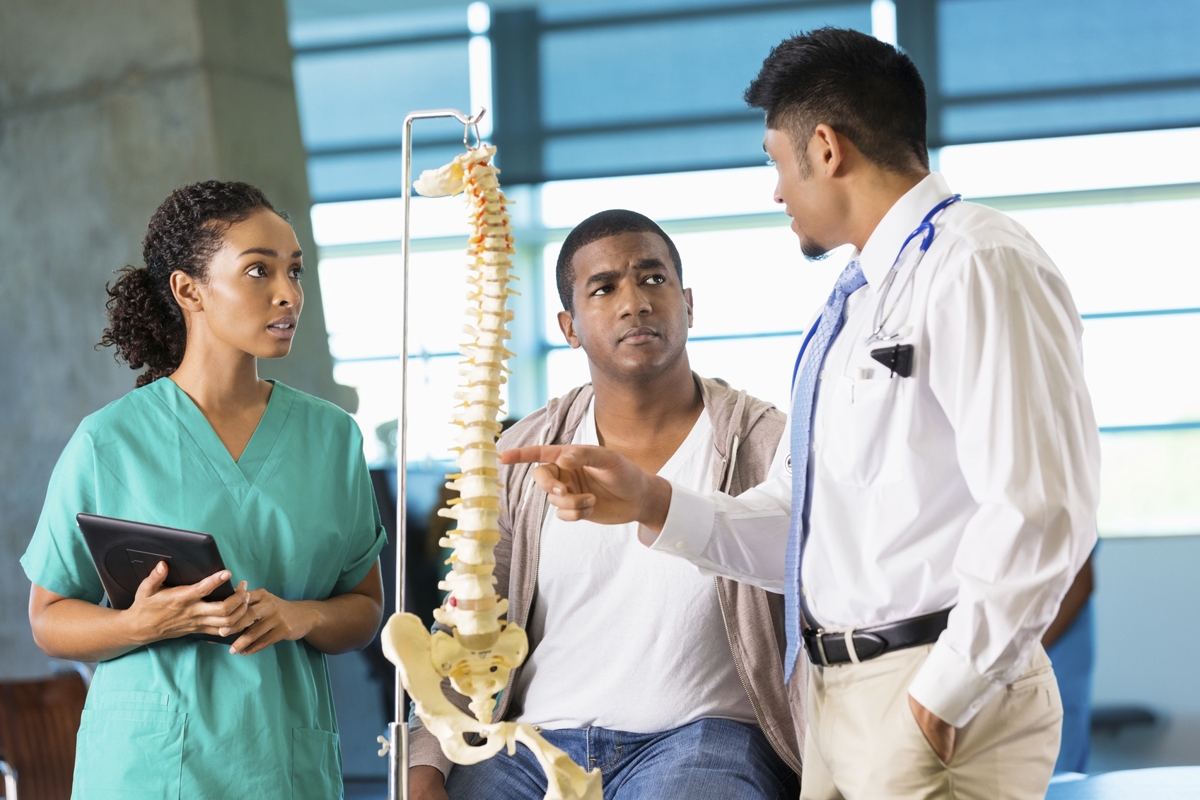Reldesemtiv Improves Muscle Strength in SMA Patients, Trial Data Show

Reldesemtiv improved muscle strength for walking and respiration in a dose-dependent manner in spinal muscular atrophy (SMA) patients, data from a Phase 2 clinical trial show.
As a fast muscle activator, reldesemtiv will not treat the underlying causes of SMA — a lack of the SMN protein to nourish muscles — but that isn’t its intent. This potential therapy is meant to be used in conjunction with disease-modifying gene therapies, both the one approved (Spinraza by Biogen) and others possibly coming up for approval.
“It’s unlikely those therapies are going to completely normalize muscle function,” Fady Malik, MD, executive vice president of Research and Development at Cytokinetics, said in an interview with SMA News Today. “We view muscle-directed approaches, such as ours, as being complementary to the gene-directed approaches.”
Data from a very recently completed clinical trial testing reldesemtiv for a first time in SMA patients — adolescents and adults with types 2 through 4 — were presented by John Day, MD, a professor of neurology and pediatrics at Stanford University, at the 2018 Annual Cure SMA Conference earlier this month in Dallas.
The presentation, “Update of CY 5021: A Phase 2 Clinical Trial of Reldesemtiv, a Fast Skeletal Muscle Troponin Activator (FSTA), for the Potential Treatment of Spinal Muscular Atrophy,” covered data on 70 SMA patients treated either with reldesemtiv or placebo.
Reldesemtiv, a selective fast skeletal muscle troponin activator (FSTA) being developed by Cytokinetics in collaboration with Astellas, is designed to act by slowing the rate of calcium release from fast skeletal muscle fibers, so as to improve contraction in muscle groups.
The Phase 2 clinical trial (NCT02644668) was a hypothesis-generating study with a primary goal of determining reldesemtiv’s effectiveness on muscle activation after eight weeks of treatment at a high and low dose. Secondary objectives centered on its safety, tolerability, and pharmacokinetics (essentially what the body does to a drug: how quickly it is absorbed, distributed, metabolized and expelled).
It included two study groups, based on ambulatory ability. Thirty-nine patients, grouped as those able to walk and those not, were treated twice daily with either reldesemtiv at 150 mg, or placebo. Another 31 patients, similarly grouped, received either reldesemtiv at 450 mg or placebo twice a day.
All underwent assessments of skeletal muscle function and fatigue at four and eight weeks of treatment.
Effectiveness as a primary trial goal was measured by tests that included a look at respiratory muscle strength via maximal expiratory pressure (MEP); the six-minute walk distance (6MWD) test, a measure of aerobic capacity and endurance; the Hammersmith functional motor scale-expanded, a measure of neurological function primarily relevant to infants and toddlers; the timed up-and-go test, a measure of balance and mobility; and hand-held dynamometry, which measures such things as elbow and knee flexion, and handgrip.
In total, eight different tests were assigned as primary measures of treatment effectiveness, because they “all measure different things,” Malik said. “And this study meant to be an exploratory study to see where would a muscle activator manifest itself.”
Children and adults were assigned in a 2:1 mix to treatment or placebo — an accepted randomization because of the scientific strength of a placebo trial, he said, and because, when this trial opened in December 2015, there was no approved treatment for anyone with SMA.
Join our SMA News Today to know more about what was discussed in the conference!
Trial results
Results presented by Day at the conference focused on two primary measures, the 6MWD test and the MEP test of respiratory muscle strength. The results for treated patients, relative to those given a placebo, were good at both doses, although clearly better in the 450 mg high-dose group.
In the 6MWD test, patients treated with 150 mg twice a day walked 10.86 meters farther than placebo patients in six minutes after four weeks of treatment, and 7.72 meters farther after eight weeks. High-dose group patients increased their distance by 35.63 meters compared to placebo at four weeks, and by 24.89 meters at eight weeks of treatment.
This test is a “measure of [muscle] fatigue — how many steps can you take in six minutes basically,” Malik said. “And in the highest exposures in the high-dose group, you have statistically significant results. … But in small studies like this, we generally look at consistency in data rather than focusing on a single p value.
“And there we saw both dose-dependent, exposure-dependent, and time-dependent changes in six-minute walk that were consistent with what we think is an effect of the drug on muscle disease,” Malik said.
Likewise, muscles used to breathe also showed increased strength upon treatment. Maximum expiratory pressure, or the maximum positive pressure generated in a single exhale, increased by 5.95 cm and 9.17 cm of oxygen in the low- and high-dose groups at four weeks, respectively, relative to placebo, and 11.69 cm and 13.15 cm at eight weeks.
Other primary measures were not as successful, Malik said, failing to “show a meaningful effect one way or the other” and so “neutral in terms of the effect of the drug.”
But that’s not necessarily surprising given this first patient trial’s exploratory nature, in which goals were stacked to see what would shake out, he added.
“We were interested in making sure we could assess muscle fatigue, sort of repetitive exercises, because the mechanism of action … improves muscle stamina.”
Importantly, safety was shown with no serious side effects in any reldesemtiv-treated patients and was well-tolerated. No dose-limiting effects were seen, and future trials may test higher doses. Healthy volunteers in earlier Phase 1 trials “were able to achieve exposures that were about double to what we saw in this study … [with] increases in the effect of the drug on muscle function.”
Still, there were surprises: A muscle mega score “trended toward” favoring placebo patients, a couple of whom “remarkably improved,” Malik said. “And we’re trying to understand how that’s possible.”
Data presented at the June conference were quite fresh for Cytokinetics, Astellas and researchers alike, and in need of greater review; the trial itself had ended just earlier that month.
Looking ahead
Adolescents and older patients — ambulatory or not — were the target groups in this Phase 2 study because they had “stable disease” that would show more clearly the treatment’s effects. Type 1 patients were excluded because of a harsh reality: by age 12, untreated SMA type 1 — as all such patients were in 2015, prior to Spinraza’s late 2016 approval — would have “very little residual motor function left,” Malik said.
These two exclusions may well change in future Phase 2 or 3 studies that Malik thinks are likely.
Reldesemtiv’s development companies now have data that would support younger patients, possibly those as young as 3 or 4, and their inclusion is something to consider, Malik said.
Patients taking Spinraza or another disease-modifying therapy, should one be approved, while testing reldesemtiv are rather definite, because of the potential treatment’s complementary nature. Even if these therapies show a clinically significant delay in disease progression, treated infants and children will still have muscle damage and need a muscle activator like reldesemtiv.
“There’s some remarkable data that [has] come out of trials of nusinersen [Spinraza] and some other gene-therapy approaches, but it’s unlikely those therapies are going to completely normalize muscle function,” Malik said.
“Future trials are going to be looking at a very different background of therapy, so we’ll need to study this in combination. We think that’s a good thing.”



